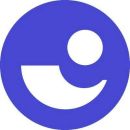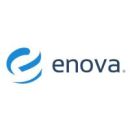As anyone who has been on the phone with a bank or airline can attest, human connection can make or break an interaction. But people don’t always need to cancel a flight or set up direct deposit. Sometimes customers want to book a last-minute haircut or brunch reservation — without talking to someone.
That’s why Resy Restaurant Success Manager Chandre Geis said her team iterates processes on a case-by-case basis.
“The more complex or sensitive the issue, the less automated it can be,” Geis said.
She and the following four other customer success professionals personally interact with clients while relying on software tools to scale their operations. For example, at customer success platform Catalyst, Rachel Guerra rereads and hits “enter” on every email she sends, despite using templated responses to most common inquiries.
In customer success, automation doesn’t need to come at the price of consumer loyalty.

There’s nothing better than having access to repeatable steps and reusable documents to jumpstart your relationship with clients at a new organization, according to Rachel Guerra. The customer success manager says that a central hub of resources is crucial for employee ramp up — and she would know. Catalyst provides users with data so they can improve outreach and better serve customers.
When it comes to scaling your customer success team, what are the most important considerations?
The only way to set your customers up for success is to set your CS team up for success. New headcount and tightened processes must align with the value proposition you have for your customers and aid in delivering that value. Provide employees with a collaborative customer journey framework that can be iterated on, complete with clear milestones, tasks and assets. New hires should be able to access a centralized hub so they can familiarize themselves with their books of business.
What tools or technologies do you use to make customer success more scalable?
Delighted, Asana and Intercom are just a few tools that impact our CS organization. However, I wouldn’t survive without the entire Google Suite and Catalyst. G Suite encourages easy collaboration and goal tracking with our customers. It enables our internal organization to share customer best practices, wins and feedback that ultimately inspire our product.
Similarly, because Catalyst is the central hub of my customer data from several of the softwares mentioned above and also allows me to track my tasks, notes and customer interactions, it’s easy to distribute customer updates cross-functionally. Lastly, by centralizing customer notes and interactions, transitioning accounts is seamless.
I think the type of automation you use heavily depends on the segment of customers that you own.’’
How are you striking the right balance of automation and human touch?
Given how meta my job is, my favorite part about my role is interacting with and learning from the CS leaders I get to work with. While I’ve admittedly been stubborn about leveraging automations because I could happily chat on the phone with our customers for hours on end, they can really benefit productivity. However, I think the type of automation you use also heavily depends on the segment of customers that you own.
For example, there will be variance between a business that only serves enterprise accounts versus one that serves small business accounts. In my own personal workflow, I focus on automating my tasks while ensuring that my customers always feel like I am giving them a human touch.
I ask myself how I can work more efficiently and still maintain tailored, personal interactions with my customers. It’s all in the templates. Whether it’s a note template, an email template or that customer journey framework I mentioned earlier, simple automations help me work faster. I think about how to automate my motion but not my interactions with the customer.

At OnDeck, leadership auto-sends Tableau data reports to all interested team members. That way, employees receive daily accounts of individual and team goal metrics. Though the online lending company prides itself on always offering a personal touch, Customer Service Manager Joseph Castaneda said automation can often be a service center’s best friend –– when used correctly.
When it comes to scaling your customer success team, what are the most important considerations?
At OnDeck, our CSM team is a resource and strategic business partner across the organization. With that in mind, the first variable customer service considers when we look to scale our team is management. We ensure managers and seniors lead coworkers to success in their careers by providing the resources to enhance mutual accountability. We focus on defining our team priorities in alignment with company goals. We also maintain a culture focused on work ethic and recognition.
Promoting a results-driven work environment by leading by example, celebrating success and holding team members accountable has proven to pay dividends regularly. Scaling a team effectively depends on management’s ability to supply agents with the tools necessary to measure success.
What tools or technologies do you use to make customer success more scalable?
Customer service management uses Tableau to pull together data from every system used at the agent level to report team and individual workloads. By pulling data from our phone system, CRM and servicing console, we can quickly deliver agent progress on both daily and monthly goals.
Leveraging these technologies allows us to quickly enhance the agent experience, identify points of friction and make scalability decisions. Additionally, leadership maintains a separate view populated with what we call “areas of focus” through Tableau. Our business and customer needs change rapidly. Our areas of focus help to provide a quick look into what our leaders are most interested in, beyond daily key performance indicators.
We see if we can automate anything deemed low risk with a high request volume.’’
How are you striking the right balance of automation and human touch?
“Strike the Right Balance” is one of OnDeck’s five core values. In our industry, people and technology complement one another. We believe technology is only part of the solution. Our ability to feel, engage, pivot and respond to customers sets OnDeck apart.
However, automation can be a service center’s best friend when used correctly. We continue to see our customers’ appetite for self-service options grow. So we are constantly exploring the opportunity to provide solutions wherever possible. For our team, it comes down to potential risk, impact on the business and customer satisfaction.
We see if we can automate anything deemed low risk with a high request volume. The customer portal provides simple solutions in order to strike the right balance between providing customers with self-service options and access to a CSM.
Our NPS and customer-satisfaction ratings have increased as an organization, in large part due to automation and low-touch messaging. Automating specific outreach frees our CSMs up to provide feedback to customer pain points we might not have been able to personally identify.

At MaestroQA, the customer success team is all about business impact. Head of Customer Success Domenic Nucci said he’s made sure to focus on asking customers, and often even coaching them, to think about what they want out of a quality assurance program. Nucci said doing so is especially critical in a cost-cutting environment. At this stage in business, his team hasn’t heavily prioritized automation.
When it comes to scaling your customer success team, what are the most important considerations?
The customer success team needs to understand our customers’ goals, help them achieve those goals and impact their organizations in the biggest way possible. That’s my most important consideration as we scale.
When we were a small company looking to make our name in the market, we could over-service customers. We used a very high-touch model. We understood how customers needed to impact their businesses through our product, and we didn’t worry about scale. Our CSMs had been on the team for a while and knew the product and market well.
As MaestroQA and the CSM team grows, coaching the team on these value-based conversations has been critical. There is a tendency to revert to a more reactionary, customer-support operating model as the team becomes stretched thin. From a scale standpoint, this means building and iterating on a playbook that can equip us to have the most insightful conversations.
What tools or technologies do you use to make customer success more scalable?
We started using call recording software Gong.io a few months ago. From a coaching standpoint, it allows us to listen to CSM calls, leave comments and feedback at specific moments in the call and search for keywords in conversations. We can also share insightful conversation with others on the team so they can learn through example.
From a business standpoint, we share insights from these conversations across the company to help everyone better understand our customers’ pain points and goals.
We still have a heavy focus on the human touch.’’
How are you striking the right balance of automation and human touch?
We still have a heavy focus on the human touch. At our stage in business, the personal connections we make with our customers significantly impact our company. So we haven’t prioritized automation.
We make a point to spend time with our customers to help them get the most value out of our product. As a growing startup, understanding what problems we aren’t solving can sometimes be more important than knowing the problems we are solving.
This mentality helps build up our reputation. Because of our high-touch service model, our customers trust us to help them build quality QA programs.

At Doorkee, leadership rewards thoughtful failure as well as success. And sometimes, that thoughtful failure comes in the form of figuring out what customer success systems to automate and what not to. Director of Customer Journey Andrew Koffsky said that always having data available to support and refine the team’s hypotheses yields adjustments that move the real estate company in the right direction. Before automating a task, he asks himself three questions.
When it comes to scaling your customer success team, what are the most important considerations?
We are constantly reevaluating what it takes to scale our customer success team. My personal favorite company value at Doorkee is that we reward thoughtful failure as well as success. This value encourages a company-wide willingness to test new ideas and processes, with the intention of iterating and improving them as quickly as possible. We can’t manage what we can’t measure.
We also focus on building solutions that evolve our systems. As a growing team, not only does doing so alleviate capacity constraints, it also sets us up for success. We can concentrate on what’s important, not just urgent.
We are constantly reevaluating what it takes to scale our customer success team.’’
What tools or technologies do you use to make customer success more scalable?
We abide by the “standard work” philosophy of the Six Sigma methodology, which allows us to synthesize all of our core processes down to a set of repeatable steps. Instead of scrambling to develop training materials every time a new team member joins, that new member can tap into a growing knowledge base of core processes.
We also like to use tools that can integrate with one another. Our team relies on Salesforce and SalesLoft to access and update user data. That way, we don’t have to duplicate our efforts.
How are you striking the right balance of automation and human touch?
I use three main criteria to assess whether a task can or should be automated: frequency, difficulty and opportunity cost.
First, how often do I find myself performing this task? Does it occur on a particular schedule? Second, does it require complex thinking or emotional intelligence, or is it mindless? Third, what other opportunity am I giving up when performing this task? If you can answer these three questions clearly, you’ll have a much better idea of whether a task can or should be automated.
While we struggle with the ideal balance of giving personal touch versus automating for scale, I genuinely believe that, nowadays, using great tools can be a powerful solution to the dilemma. Using SalesLoft, we’re able to manage high volumes of inbound leads from a diverse user base while customizing and tailoring omnichannel messages to meet individual customer needs.

Chandre Geis worked in restaurant operations for more than 20 years before moving into the tech space. She said that when she realized the impact she could lend to other operators through consultancy and table management tools, the decision to shift roles felt natural. Above all, Geis emphasizes the importance of being able to hear clients out, make an assessment and help them solve their issues quickly and succinctly.
When it comes to scaling your customer success team, what are the most important considerations?
The most important traits I look for in team members include empathy, clear communication and flexibility. Empathy is necessary to understand the customer journey and identify where adjustments can be made to improve their experience. This is especially true when working with restaurant operators who are dealing with a thousand interruptions and little fires every day. Having the ability to adapt quickly as situations change is crucial. To be honest, it’s similar to running a restaurant in a lot of ways.
When I think about scaling our team, I know I need to remain tapped into their bandwidth, both individually and more holistically. I’m a planner, so I always like to be ahead of the curve. But my favorite part of managing people is helping them grow. I have found that as individuals become more skilled and multi-faceted as team members, they are more wholly invested in the business’s overarching goals. It becomes easy to look to them for the signs that it’s time to bring someone new on.
What tools or technologies do you use to make customer success more scalable?
Our CRM is one of the most robust on the market. It allows us to focus on giving more operationally focused analytics to our partners. We use Looker to connect the systems we are tapped into and help our partners make informed decisions that can drive their businesses.
We also rely heavily on our support chat. It allows our partners to reach us seven days a week, without compromising their experience or overwhelming our teams. We are able to provide resources and support without our partners having to sit on hold or wait for someone to get to their email inbox.
Internally, we use Salesforce to help track key performance indicators and objective key results. So much of the work that you do as a CSM is qualitative, so it’s important to understand how each team member is using their time and lean on these metrics to help quantify those soft skills.
The more complex or sensitive the issue, the less automated it can be.’’
How are you striking the right balance of automation and human touch?
The only component of our role that is fully automated at this point is analytics and reporting. Even still, everything we do and provide requires a human touch. We use our support and mail merge software to help communicate with partners at scale, but all of that content is driven by our team.
Our understanding of our customer journey has influenced our process and approach to automation. That approach ultimately comes down to two things: complexity and sensitivity. The more complex or sensitive the issue the less automated it can be.
Resy is an easy system to use but the setup is highly customizable. Our involvement is dependent on our partners and how they are using the system. We have many operators who don’t really care to tap into their analytics. And then we have many who want to connect with our team regularly. It’s about getting to know your client and understanding what’s important to them.











